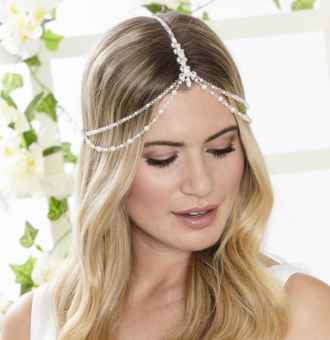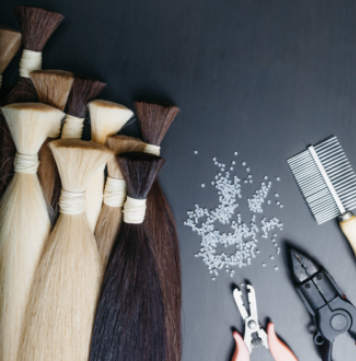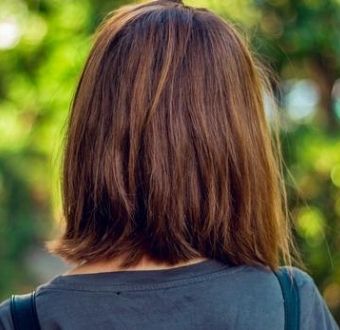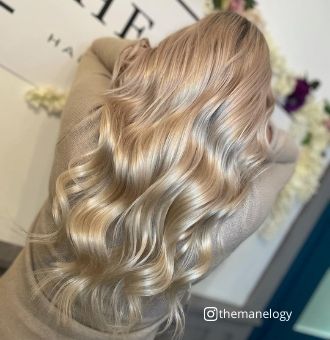Your Cart is empty

on today's blog:
10 Protective Hairstyles For Sleeping (Straight To Curls Edition)
reading time: 7 minutes.
Ever wondered what goes on with your hair while you slumber? Friction, tangles, scratches, even the occasional rogue yank - it’s a nighttime hair party! All that morning loving you lavish on your crowning glory can easily unravel if your sleep routine is MIA. And for protective hairstyles for sleeping, this is even more crucial, especially for delicate hair extensions. Clip-ins, permanents, you name it - they need extra TLC after dark to stay in tip-top shape.
So, you’re asking, “What’s the secret sauce to sleeping soundly with hair extensions and waking up with a mane to envy?” Buckle up, because the answer’s surprisingly simple… and depends on your style! In essence, it’s about finding the perfect sleep routine for your locks, including the best hairstyle to sleep in for you and your extensions: we’ll explore some options tailored to different hair types and preferences in a bit, so get ready to say goodbye to morning tangles and hello to fabulous, bouncy hair!
Protective Hairstyles For Sleeping: Haircare Night Routine
Before we talk about protective hairstyle more in detail, let’s discuss your haircare night routine. Do you go to sleep with wet hair? Do you brush your hair before going to bed?
How To Prep Your Hair For A Protective Sleep Hairstyle
First things first, never ever sleep with wet hair when possible: sleeping with wet hair can lead to many problems for your scalp, such as fungal infections, skin irritation and itchiness, dryness, and dandruff.
As if this was not enough to convince you to stop sleeping with wet hair, I should also mention that it promotes hair breakage. Ideally, you should let your hair air-dry (to avoid heat damage), then apply your overnight hair serum or hair oil, massage your scalp, and go to bed. Now, let’s talk about your bed: have you ever thought of investing in a new pillowcase?

Silk or satin pillowcases (and, why not? Even coordinated bedsheets) not only feel heavenly on your hair and skin: the smooth texture prevents hair breakage caused by friction (something that can happen with cotton pillowcases, which are rougher in texture). What's more? Ah, yes, sleeping on a silk pillowcase can also help prevent wrinkles and the build-up of dust mites, fungus, mould, and a whole lot of other common allergens.
Last but not least, using a sleep cap is also a good investment. Not everyone feels comfortable in sleeping with something covering their head, but if you’re not bothered by the idea or simply would like to try it, a silk or satin sleep cap could be that extra measure that completely changes your hair game whilst you get your beauty sleep. If your hair goes from wavy to curly, a sleeping satin cap will help you minimize frizz too. Find out more what frizzy hair is and how to tame it in our "Frizzy hair: Your Ultimate Guide To A Frizz-Free Life" guide.
Protective Hairstyles For Sleeping: What is a protective hairstyle
A protective hairstyle is a hairstyle that tucks the hair away and keeps it free from manipulation. It also prevents it from tangling during your sleep and saves it from friction. If you keep your hair long, it is extremely important that you wear them in protective natural hairstyles to bed, in order to avoid breakage and split ends. Bonus points: did you know that many protective hairstyles for sleeping are also heatless overnight styling methods? When tucking your hair in or braiding always remember to avoid wearing hairstyles too tightly as that may cause traction alopecia if worn for extended periods of time, and the pulling may irritate your scalp – leading to flaky scalp and itchiness. Ready to go? Let’s explore the best protective hairstyles for straight to wavy hair.
1. Protective Hairstyles For Sleeping: The Classic Plait
This is the most basic braid you could imagine, obtained by intertwining three separate strands of hair and tied at the end with a hair tie or, in some cases, a ribbon.

2. Protective Hairstyles For Sleeping: The Twisted Top Bun
Another fairly easy hairstyle: the length of your hair is twisted together and tucked in a bun sitting on top of your head. Quick and easy, it usually doesn’t require the aid of any type of barrettes or bobby pins.
3. Protective Hairstyles For Sleeping: The Loose Bun
Also known as messy bun, this simple hairstyle can be used both at home for your own comfort and to keep your hair away from your face, or out for a “fashionably late” laid back but chic effect. Simply tie your hair up in a bun, leaving it loose enough to be stable without pulling on your roots.
4. Protective Hairstyles For Sleeping: Two French Braids
Despite its name, the origins of the French braid are uncertain and have been widely disputed and discussed over the years – Greeks and Africans are often credited as the first cultures to use this braiding technique, with the earliest evidence coming from Algeria and it dates back to almost 6000 years ago. In Greek art, this style of braid is featured on kouros statues. Similar to the classic plait, the French braid starts closer to your scalp and goes down adding pieces of hair to its body on its way to the nape of your neck. In this video, EverydayHairInspiration shows and explains step by step how to get your French braid done.
5. Protective Hairstyles For Sleeping: Dutch Braids
Similar to the French braid and often referred to as “reverse French braid”, the Dutch braid crosses its sections underneath each other instead of over one other. Together with the French braid, the Dutch braid is one of the most popular and trendy traditional hairstyles.
6. Protective Hairstyles For Sleeping: The Crown Braid
During Medieval times, hair was just as important as your dress code. Back then fashion wasn’t just a caprice, but a whole presentation of one’s self in terms of social status, financial situation and respectability. Given the prejudice about certain hairstyles being associated with heretics and witchcraft and the general hygienic situation of the time, braided up-dos were between the preferred option for many women. This is how the crown braid came to be! Nowadays, the crown braid is an elegant protective hairstyle to keep your locks safe whilst making you look fresh and youthful.
7. Protective Hairstyles For Sleeping: The Low Ponytail
Probably the easiest, most effortless style of them all. A low ponytail is a simple hairstyle to keep your locks all in one place, although this doesn’t offer much protection to your ends unless you tuck them in with a second hair tie.
8. Protective Hairstyles For Sleeping: Space Buns
Space buns are a variation of the Japanese hairstyle known as odango, a generic term that indicates a different number of hair buns. The name comes from Princess Leia’s hairstyle in Star Wars, gaining popularity in the late 70s. In Chinese culture, the bun is a gender-neutral hairstyle; in western cultures, this hairstyle was adopted by the populations that the Romans defined “barbarian”, such as Goths, Vandals and Lombards. Space buns are usually two smaller buns sitting on top of your head. They are often worn with tendrils hanging down the one’s cheekbones.
9. Protective Hairstyles For Sleeping: Pigtails
Pigtails follow the same concepts of a ponytail, but multiplied by two. Hair is usually parted in the middle and pigtails can be worn high on your head or low on the nape of your neck.
10. Protective Hairstyles For Sleeping: Fishtail Braids
This is not the easiest hairstyle to do at home, and it honestly looks so pretty that it almost hurts doing it just for the sake of going to bed (I mean, obviously you can use it for a night out too, but you know what I mean!). The fishtail braid resembles a French braid in its smoothly woven appearance – however, it only divides the hair in two sections instead of three. It can be incorporated in any of the styles above (think fishtail pigtails, fishtail crown braid, fishtail messy bun…) and it’s been a timeless classic since ancient Greece. Here, Kayley Melissa shows us her technique to achieve a loose but elegant fishtail braid.
Protective Hairstyles For Sleeping: Twisted Rope Braid
This is the ideal protective hairstyle for long hair, as it allows you to have control not only on your ends, but along the whole length of your tresses. On top of that, it will leave you with soft, textured, wavy hair in the morning. What's not to love?
To create a twisted rope braid, all you need to do is first separate your hair in two sections - then grab one section of hair and twist. Repeat the process with the other section: once you're done, grab your two sections and twist them together - forming a rope of hair.
Conclusion:
I hope you found this guide not only informative and insightful, but also eminently applicable to your own haircare routine. Which style particularly sparked your interest? Perhaps you've even experimented with some of these techniques before? Should you choose to do so, please don't hesitate to tag us on Instagram – we'd be delighted to witness the fruits of your efforts! Remember, even a modest investment in nighttime haircare can yield significant dividends in the morning. So, indulge in a luxurious satin pillowcase, embrace your chosen protective style, and drift off to sleep knowing you're investing in the future of your magnificent mane.
Thank you for reading our blog! We hope you enjoyed this article – if you liked what you’ve read, share this with your friends and follow us on our Social Media channels to keep up with the latest trends, tips, guides, and more!
Interested In Hair Extensions? Shop The Best Sellers…
For our full range of Hair Extensions including Clip-Ins, Ponytails, Permanent and Many more with over 60 shades to choose from head to our main page. Including our best selling Seamless, Tape In Hair Extensions, and One Piece Hair Extensions.





















